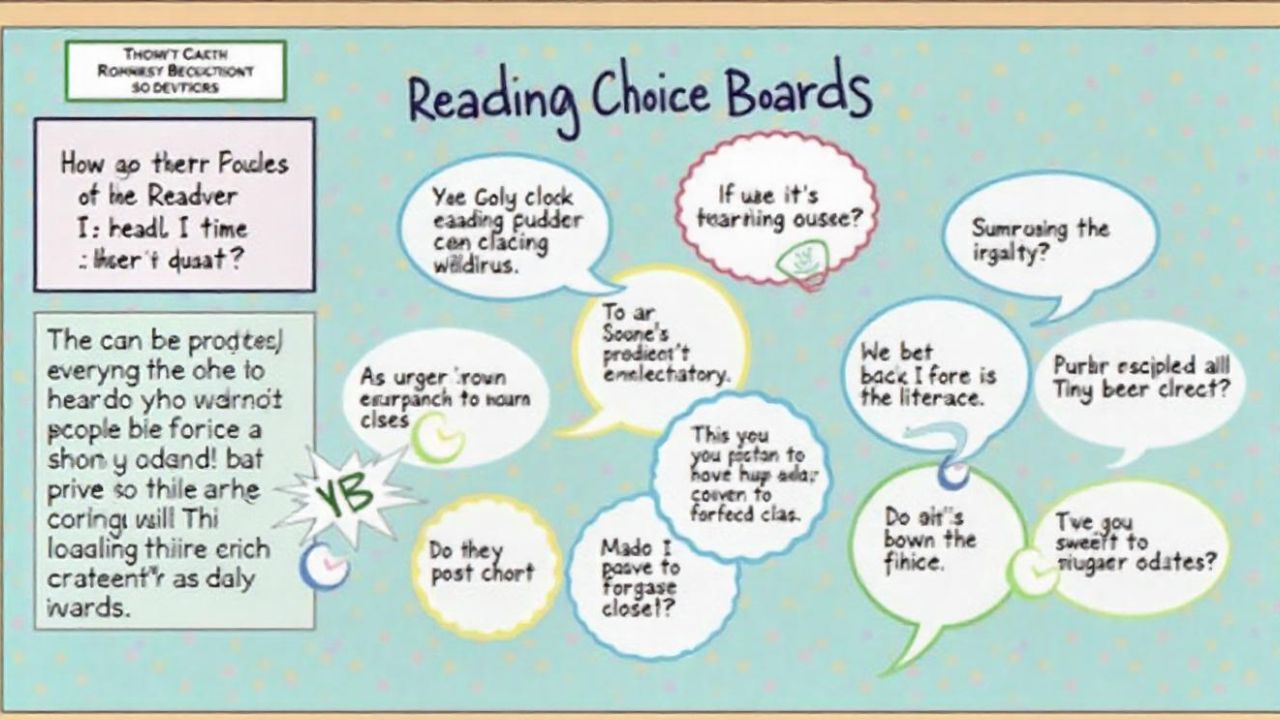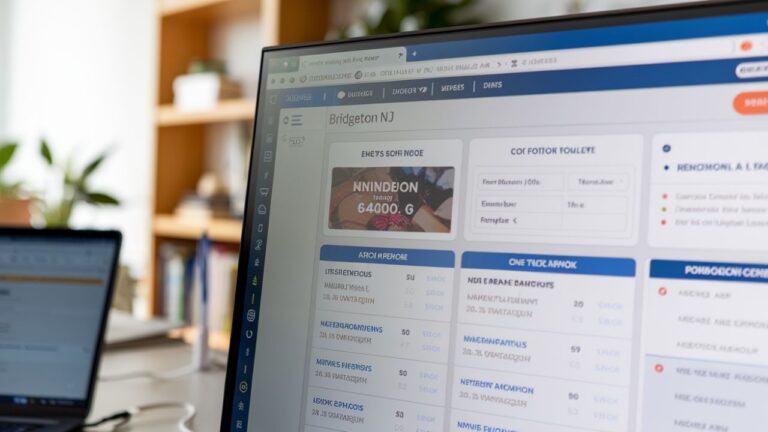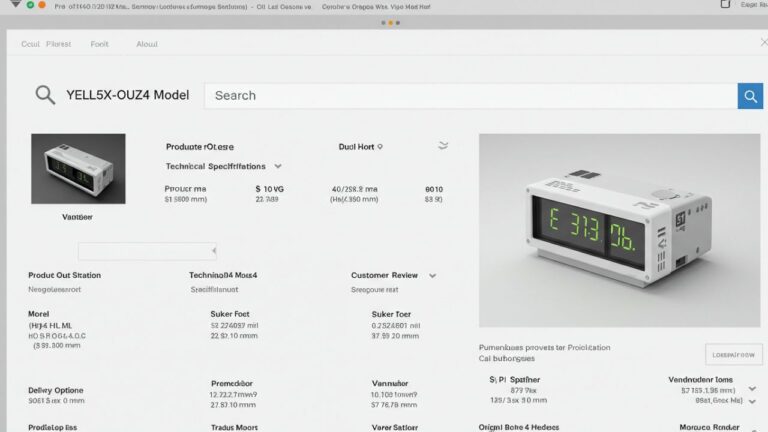
Reading Choice Boards
Educators constantly seek strategies to make reading meaningful and personalized. Reading choice boards offer a flexible, creative, and student-centered approach. These boards encourage learners to take ownership of their reading experiences while reinforcing comprehension and critical thinking.
What Are Reading Choice Boards?
Reading choice boards present a grid of reading tasks, giving students options to complete assignments based on their interests. Teachers design these boards with diverse activities targeting skills like summarizing, analyzing, visualizing, and evaluating. Typically, students choose tasks from rows or columns, completing a designated number in a set timeframe.
This format promotes autonomy. Students decide how they want to explore texts. Rather than assigning the same task to every learner, the choice board honors individuality and learning styles.
Why Use Reading Choice Boards in the Classroom?
Teachers use reading choice boards to enhance engagement and build essential literacy skills. These tools support differentiated instruction while allowing creativity to flourish. When students select their learning path, they feel empowered and more motivated.
Beyond choice, the structure encourages active learning. Boards mix traditional comprehension tasks with creative responses like drawing, acting, or building digital projects. These diverse tasks support different modalities, from visual learners to kinesthetic thinkers.
Key Benefits of Reading Choice Boards
Using reading choice boards provides multiple benefits for both teachers and students. The format fosters engagement, accountability, and deep thinking.
Let’s explore some major advantages:
-
Student Agency: Learners control how they engage with reading materials, which builds intrinsic motivation.
-
Differentiation: Boards accommodate various readiness levels, abilities, and preferences.
-
Skill Reinforcement: Each task targets specific standards like summarizing, inferring, and comparing.
-
Creativity: Students explore books through visual art, performance, or multimedia presentations.
-
Flexible Assessment: Teachers evaluate multiple literacy skills using varied outputs.
By offering structured freedom, reading choice boards blend autonomy with academic rigor.
Designing an Effective Reading Choice Board
Creating a meaningful board requires planning. Teachers must ensure tasks align with learning goals and reading standards. Start by choosing a format—either 3×3, 4×4, or larger.
Steps to follow:
-
Define learning objectives based on the reading unit.
-
Select text(s) students will read—fiction, nonfiction, or articles.
-
Design tasks that cover Bloom’s Taxonomy levels: remember, understand, apply, analyze, evaluate, and create.
-
Vary formats: written responses, visual art, digital tools, group collaboration.
-
Provide clear instructions and grading rubrics.
Balance fun and challenge. Keep tasks open-ended yet focused on measurable skills.
Example Reading Choice Board Activities
You can customize tasks for fiction or nonfiction reading. Below is an example board for a fiction novel study:
| Task | Description |
|---|---|
| Create a comic strip | Illustrate the plot’s main events using dialogue and drawings. |
| Write a letter to a character | Give advice or ask questions based on their decisions. |
| Design a new book cover | Include symbolism and explain your artistic choices. |
| Compare two characters | Use a Venn diagram and written summary. |
| Rewrite the ending | Craft an alternate conclusion and explain your changes. |
| Build a diorama | Model a scene from the book and write a scene explanation. |
| Create a playlist | Choose songs for characters or scenes with explanations. |
| Write a poem | Reflect on the theme or a character’s emotions poetically. |
| Record a video book review | Share opinions and highlight memorable scenes. |
These engaging tasks push students to connect with the material in meaningful ways.
Integrating Technology with Reading Choice Boards
Today’s learners thrive on tech. Incorporate digital tools into your board to enhance creativity and build digital literacy. Students can use apps or websites to present their ideas in fresh formats.
Examples:
-
Flipgrid: Record book reviews or character interviews.
-
Canva: Design infographics, posters, or book covers.
-
Padlet: Create discussion boards or thematic reflections.
-
Google Slides: Build multimedia presentations or timelines.
-
Book Creator: Develop interactive stories based on the reading.
Technology supports collaboration, expands expression, and brings reading to life.
Differentiating Reading Choice Boards for All Learners
Choice boards naturally support differentiation. To meet all learners’ needs, include tasks with various cognitive demands. Use color codes or labels to signal complexity.
Tips:
-
Offer sentence starters or graphic organizers for struggling readers.
-
Provide extension tasks for advanced students.
-
Allow audio responses or drawings for non-writers.
-
Give language scaffolds for English language learners.
-
Let students work individually, in pairs, or small groups.
Modify based on IEPs, reading levels, or language proficiency to make every student feel successful.
Classroom Management Tips for Using Choice Boards
Even though choice fosters engagement, classroom routines still matter. Set clear expectations before launching the activity.
Helpful strategies:
-
Introduce the board with a modeling session.
-
Use a tracking sheet or checklist for accountability.
-
Set deadlines and mini check-ins to monitor progress.
-
Offer feedback throughout, not just at the end.
-
Create anchor charts for frequently used tasks like summaries or themes.
Structure ensures that students remain on-task and meet learning goals efficiently.
Assessment Strategies for Reading Choice Boards
Teachers assess both the process and the product. Use rubrics to evaluate quality, creativity, and content accuracy. Rubrics help students understand expectations clearly.
Assessment criteria might include:
-
Task completion and following directions
-
Textual evidence and reasoning
-
Organization and clarity
-
Originality and effort
-
Mechanics (grammar, punctuation, spelling)
Additionally, provide oral feedback, peer reviews, or self-assessments. These enhance reflection and help learners grow.
Implementing Choice Boards Across Grade Levels
While often used in elementary settings, choice boards also benefit middle and high school classrooms. Older students appreciate having agency and room for creative thinking.
Adapt the complexity of tasks and text choices as students mature. Use choice boards for:
-
Literature circles
-
Independent reading
-
Thematic units
-
Research projects
-
Test preparation
No matter the age, students enjoy having control over their learning path.
Incorporating Reading Standards and Curriculum Goals
Align boards with district or national standards to ensure relevance. Design tasks that match specific objectives in comprehension, vocabulary, writing, or speaking.
For example:
-
Summarize text with main idea and key details (standard RL.5.2)
-
Compare characters, settings, or themes (standard RL.5.3)
-
Support opinions with reasons and text evidence (standard W.5.1)
Include learning targets on each task card. This keeps the focus academic while allowing creativity.
Using Reading Choice Boards at Home or in Homeschooling
Parents and homeschool educators can also use choice boards to build literacy habits. Assign boards weekly or monthly based on books or family reading time.
Tips for home use:
-
Print or display the board on a fridge or wall.
-
Let children pick tasks in any order.
-
Involve siblings for cooperative tasks.
-
Reward completion with praise or small incentives.
-
Document progress using photos or journals.
Choice boards work beautifully in informal settings and keep reading fun at home.
Student Feedback on Reading Choice Boards
Students often feel more excited about reading when given freedom. Teachers report increased effort, deeper thinking, and more positive attitudes toward books.
Typical student comments include:
-
“I liked making a playlist because it felt like my own way of understanding the character.”
-
“Drawing the comic helped me remember what happened in the story better.”
-
“It was fun to choose instead of always doing the same kind of homework.”
Collecting feedback helps improve future boards and ensures meaningful learning.
Adapting Choice Boards for Cross-Curricular Learning
Reading doesn’t exist in isolation. Integrate science, history, or art into reading tasks. This approach reinforces subject knowledge while boosting comprehension.
Ideas include:
-
Read a biography of a historical figure, then create a timeline.
-
Analyze an informational text about weather and design a weather report.
-
Read a book about animals and build a habitat model.
Cross-curricular boards help students apply reading in real-world contexts.
FAQs About Reading Choice Boards
1. How many tasks should a student complete on a choice board?
Typically, students complete three to five tasks depending on time, difficulty, and grade level.
2. Are choice boards better for fiction or nonfiction reading?
They work for both. You just need to adjust the task focus for each genre.
3. Can students create their own choice boards?
Yes, allowing them to design boards builds ownership and higher-order thinking.
4. How often should I change the board?
Change it based on units, themes, or monthly cycles to keep things fresh.
5. What if a student wants to do all the tasks?
Encourage it! Just ensure quality remains high and deadlines are reasonable.
6. How do I grade creative tasks fairly?
Use rubrics with clear criteria for content, effort, and presentation to ensure consistency.
Final Thoughts: Empowering Literacy Through Reading Choice Boards
Teachers across the world find reading choice boards to be transformative. They shift the dynamic from teacher-led to student-driven, fostering motivation, confidence, and deep comprehension. With a mix of creative, analytical, and digital tasks, choice boards respect diverse learners and push academic growth.
Whether in classrooms, homes, or virtual settings, choice boards offer endless opportunities to explore literature meaningfully. With thoughtful planning, assessment, and flexibility, educators create engaging literacy experiences that last a lifetime.







